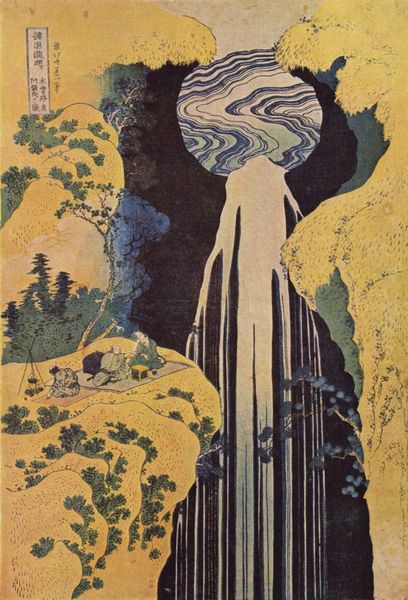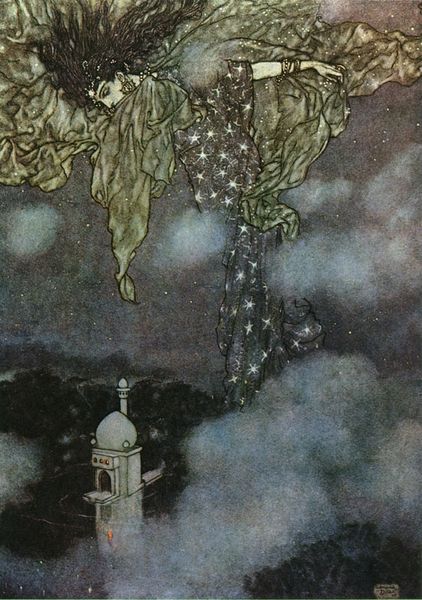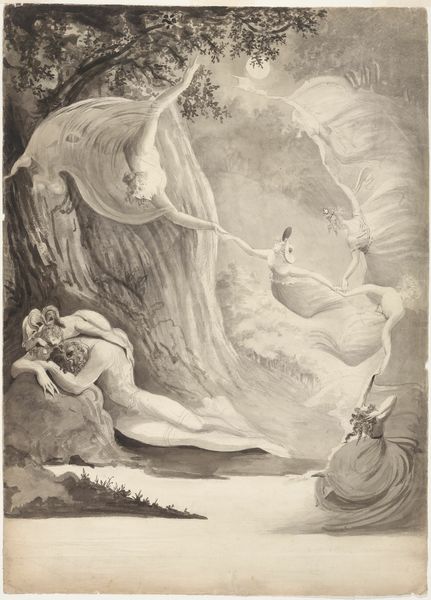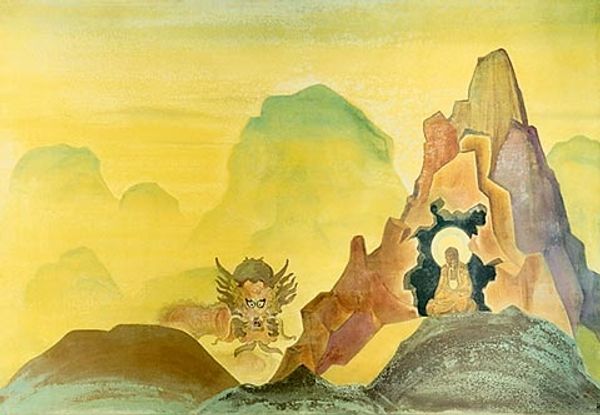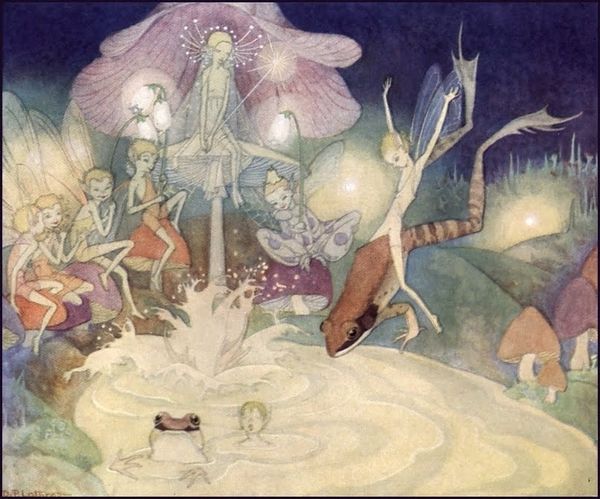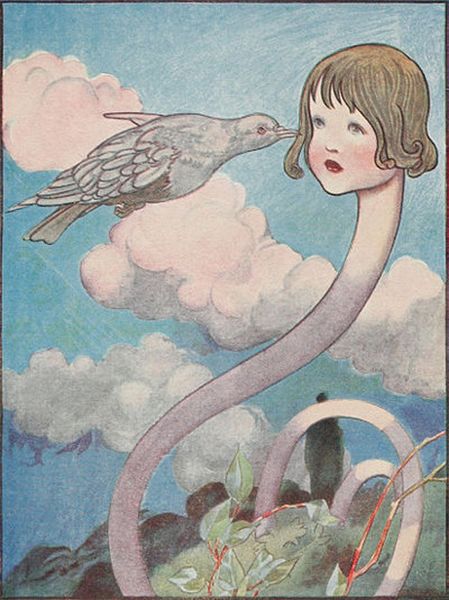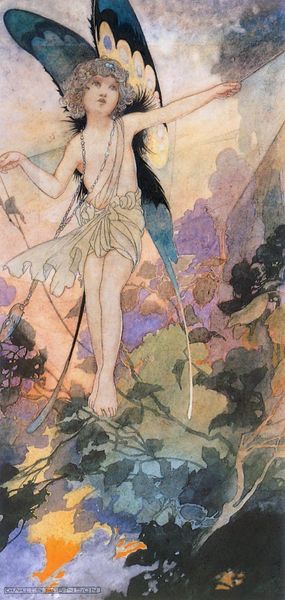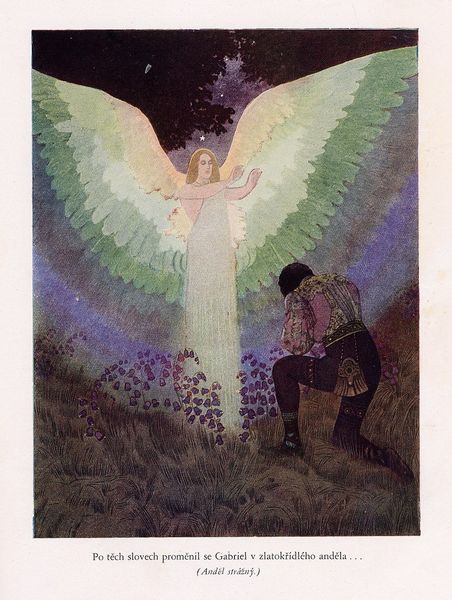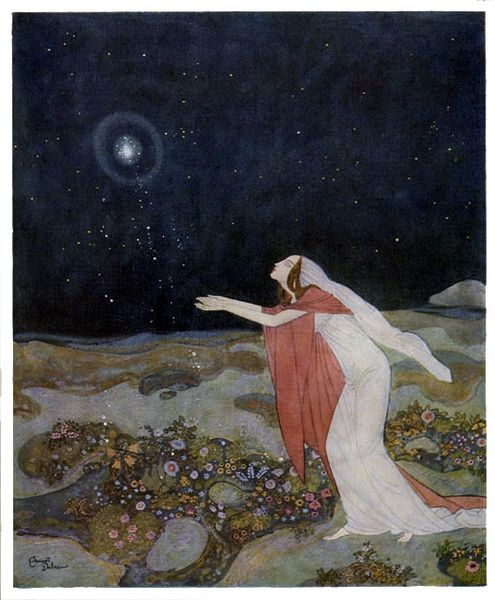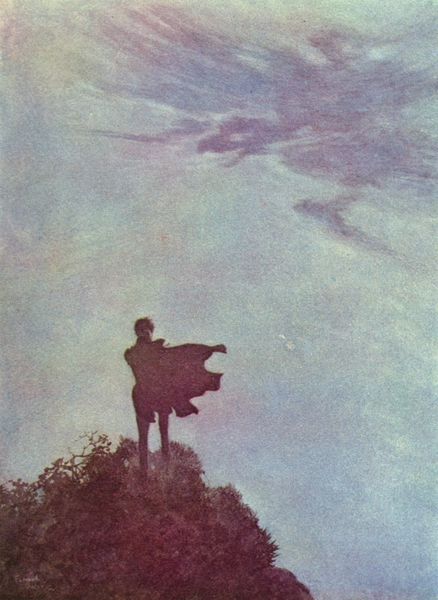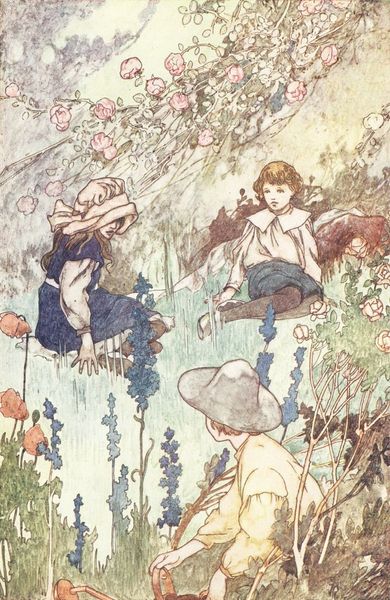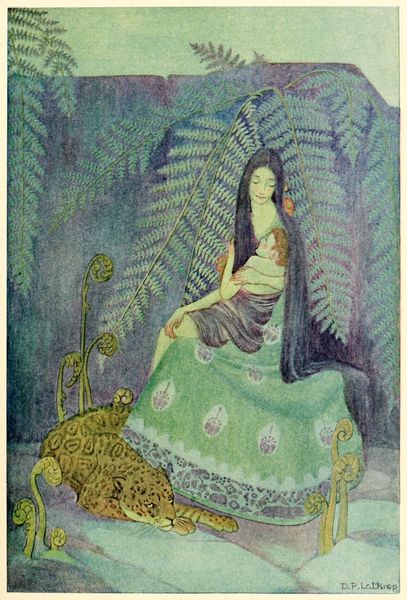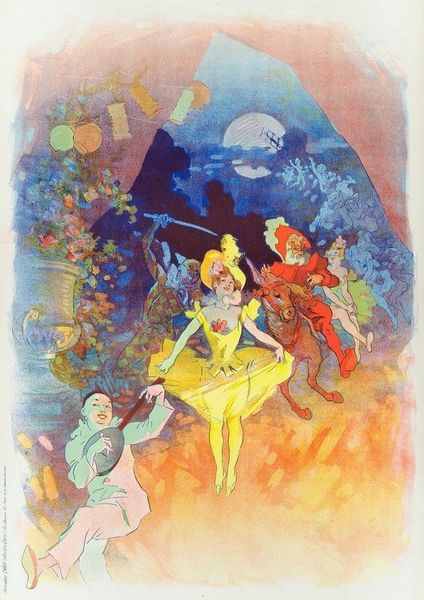
Copyright: Public domain US
Curator: Dorothy Lathrop created this piece, "A Little Boy Lost," around 1920. It’s a drawing that incorporates both watercolor and colored pencil on paper. There is an ethereal mood immediately. What's your initial reaction? Editor: Ethereal is a good word. The composition feels like a dreamscape, everything fades into the background with those diffused watercolor washes. The contrast is extremely low, it's quite soft and pale. The forms, those gigantic, disembodied figures looming behind the boy—what are we to make of that? Curator: Precisely! The figures suggest ancestral presence or perhaps the echoes of memory and family. This taps into themes of childhood vulnerability and the search for guidance. The boy atop a rough stone seems to be listening—to what? Guidance? A forgotten song? A warning? We have to remember that children's books of this era contained heavy symbolism about being good children. Editor: Note how the artist leads our eyes, too: the arc of the boy's head directs us up towards the female figure listening with the shell and that giant hand, then the orange sun anchors the lower corner of the composition, creating balance. There’s a clear formal intention guiding the viewer's experience. Is this connected to an allegory? Curator: Absolutely. I believe Lathrop uses color and imagery here to communicate a profound longing for safety and understanding. She uses recognizable figures to signify larger themes that recur throughout fairy tales—lost children, looming presences. It’s no accident, for example, that this image brings to mind Peter Pan. Children lost in time and space. Editor: So the pale color palette actually underscores the intensity of feeling here? Because the colors mute the terror, or amplify it? It certainly invites contemplation and it’s very powerful, even though on the surface it appears calm and dreamy. It certainly is effective how the artist draws us into the boy’s perspective. Curator: I agree entirely. Lathrop’s artwork uses softness to open us to very intense themes. We begin with a feeling of softness and dreaming, and end up seeing vulnerability. The symbols point toward the emotional realities of childhood and the search for a safe place in the world. Editor: It definitely transcends mere illustration and moves toward profound personal introspection—on childhood experience. The simplicity makes it linger in the mind.
Comments
No comments
Be the first to comment and join the conversation on the ultimate creative platform.
